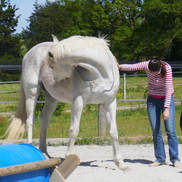- EAC CERTIFICATION
- Services
-
About
- Testimonials
- FAQ
-
Find a Certified EquineFlow Practitioner
>
- Kim Carter CEP 2
- Maria Mersman CEP 2
- Donna Thomas CEP 2
- Shermane Abbott CEP 2
- Karen Hartney CEP1
- Roz Tyburski CEP 2
- Terry Farmer CEP 2
- Maren Reaves CEP 2
- Jennifer Thompson CEP1
- Allison Ragan CEP 1
- Charleen Snyder CEP1
- Cat Leonard CEP1
- Sara Griffith CEP 1
- Tiffany Owen Avirett CEP 1
- SHARON COOK CEP 1
- Robin Richardson CEP 1
- Trish Finley CEP1
- EquineFlow Excellence Awards
HoursM-T: 10am - 3pm
|
|
"We cannot direct the wind, but we can adjust the sails." - Dolly Parton



 RSS Feed
RSS Feed